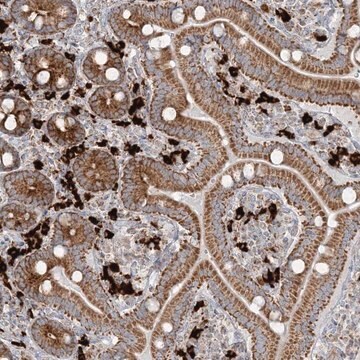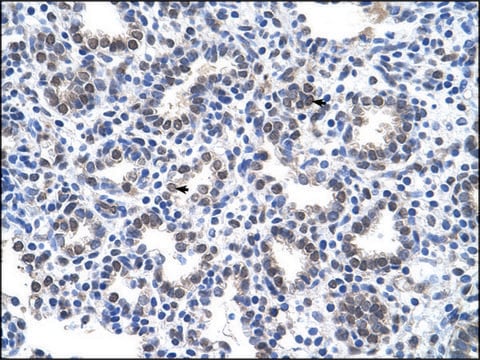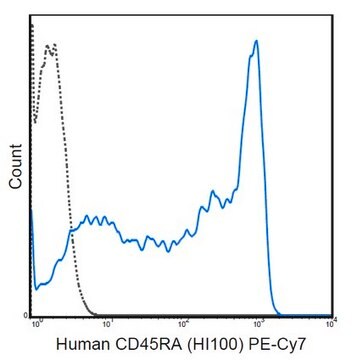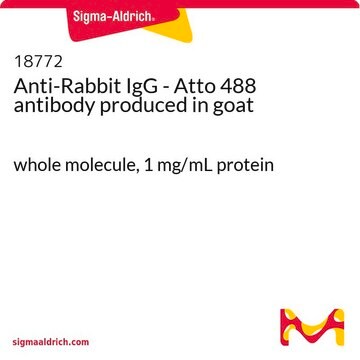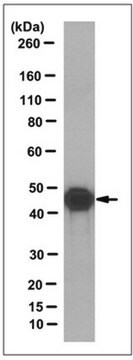MABN738
Anti-OCT6 Antibody, clone KT110
clone KT110, from mouse
Synonim(y):
POU domain, class 3, transcription factor 1, Octamer-binding protein 6, Oct-6, Octamer-binding transcription factor 6, OTF-6, POU domain transcription factor SCIP
About This Item
Polecane produkty
pochodzenie biologiczne
mouse
Poziom jakości
forma przeciwciała
purified immunoglobulin
rodzaj przeciwciała
primary antibodies
klon
KT110, monoclonal
reaktywność gatunkowa
mouse, human
metody
electrophoretic mobility shift assay: suitable
immunohistochemistry: suitable
western blot: suitable
izotyp
IgG1κ
numer dostępu NCBI
numer dostępu UniProt
Warunki transportu
wet ice
docelowa modyfikacja potranslacyjna
unmodified
informacje o genach
human ... SLC22A16(85413)
Opis ogólny
Immunogen
Zastosowanie
Electophoretic Mobility Shift Assay (EMSA) Analysis: A representative lot detected SphK1 in nuclear extracts from RT4 Schwannoma or primay rat Shcwann cells (Prof. D. Meijer, Erasmus University Medical Center, Rotterdam.
Neuroscience
Developmental Signaling
Jakość
Western Blotting Analysis: 1.0 µg/mL of this antibody detected OCT6 in 10 µg of H9 human embreyonic stem cell lysate.
Opis wartości docelowych
Powiązanie
Postać fizyczna
Przechowywanie i stabilność
Inne uwagi
Oświadczenie o zrzeczeniu się odpowiedzialności
Nie możesz znaleźć właściwego produktu?
Wypróbuj nasz Narzędzie selektora produktów.
Kod klasy składowania
10 - Combustible liquids
Klasa zagrożenia wodnego (WGK)
WGK 2
Temperatura zapłonu (°F)
Not applicable
Temperatura zapłonu (°C)
Not applicable
Certyfikaty analizy (CoA)
Poszukaj Certyfikaty analizy (CoA), wpisując numer partii/serii produktów. Numery serii i partii można znaleźć na etykiecie produktu po słowach „seria” lub „partia”.
Masz już ten produkt?
Dokumenty związane z niedawno zakupionymi produktami zostały zamieszczone w Bibliotece dokumentów.
Nasz zespół naukowców ma doświadczenie we wszystkich obszarach badań, w tym w naukach przyrodniczych, materiałoznawstwie, syntezie chemicznej, chromatografii, analityce i wielu innych dziedzinach.
Skontaktuj się z zespołem ds. pomocy technicznej